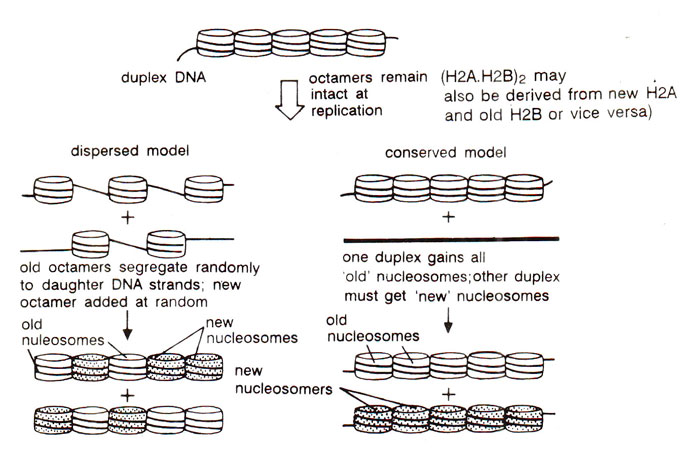
Fig. 27.12. Dispersed and conserved models of nucleosome replication and assembly (dispersed model has been found to hold good).
We have already discussed the replication of DNA in eukaryotes in previous
Chemistry of the Gene 2. Synthesis, Modification and Repair of DNA. Having known the organization of DNA in the form of nucleosomes, one may like to ask the question - what happens to the nucleosomes during replication and how are new nucleosomes assembled ? Cross linking experiments suggested that the old histone octamers are conserved during replication, so that when chromatin is replicated, the existing histone octamers are displaced from DNA to allow its replication. It has also been shown that the
conserved octamers may reassociate with either of the two daughter duplexes.
An equal number of histone octamers must be synthesized quickly, so that the nucleosomes reform more or less immediately on both the daughter DNA molecules. Although the histone octamer may be conserved, but all the conserved octamers may not reassociate with the same daughter DNA molecule. Instead they may follow a dispersed mode of distribution, in which old and new octamers are intermingled at random during association with the two daughter DNA molecules (Fig. 27.12). There is also some support for
semi-conservative assembly of histone proteins. Although (H3)
2.(H4)
2 tetramers are , stable, (H2A.H2B)
2 tetramers could result from, heterodimers (H2A conserved and H2B newly synthesized or
vice versa)
. These two models are, not mutually exclusive and both may operate in a single cell.

Fig. 27.12. Dispersed and conserved models of nucleosome replication and assembly (dispersed model has been found to hold good).
It has been shown that in the assembly of nucleosome, an assembly protein called
nucleoplasmin (a pentamer containing a sub-unit with mass of 29,000 daltons and found in the nucleoplasm) plays an important role. Nucleoplasmin binds to histones (but not to DNA or nucleosomes) and may thus release histone octamer from the DNA in a more regulated way, so that these may not make random aggregates. It is also suggested that the nucleosomes assemble first and the DNA supercoiling follows this, assembly.






